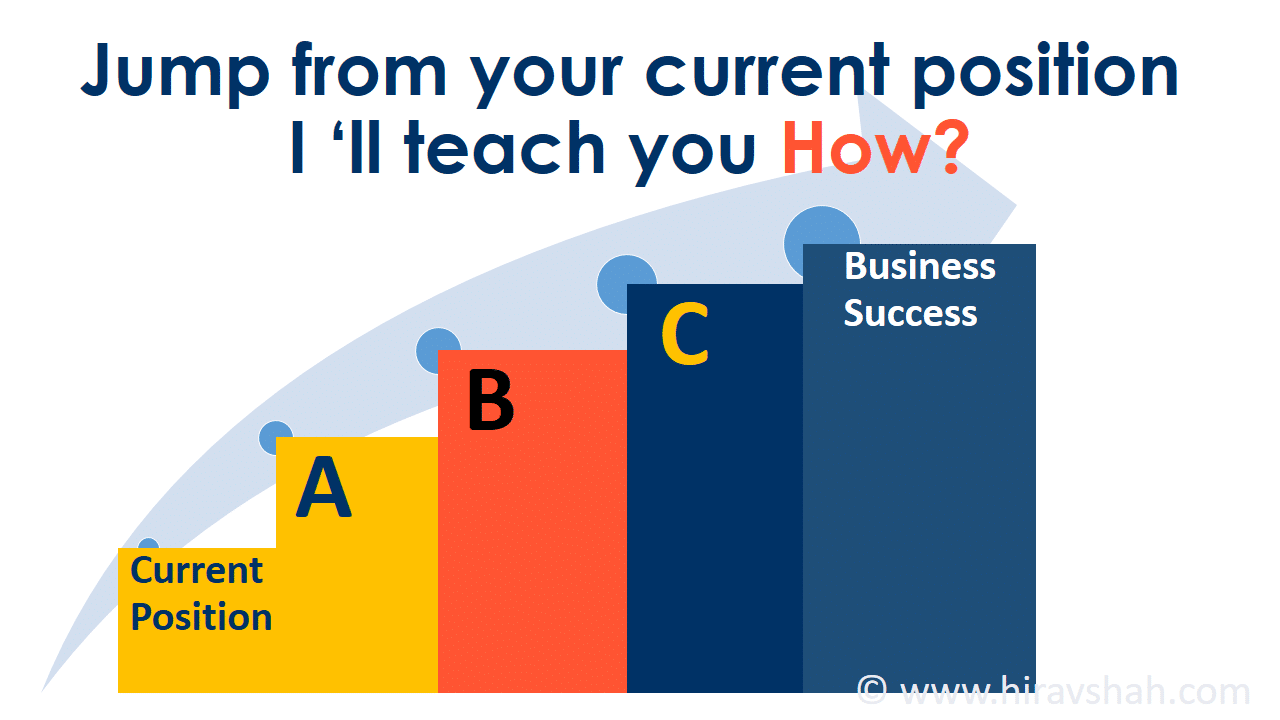Gap Analysis For Business. serves as a compass, guiding businesses through the intricate terrain of challenges and opportunities. It illuminates the gaps between current performance and desired outcomes, revealing untapped potential and areas for improvement. By bridging these gaps, organizations can unleash new avenues for success, enhance operational efficiency, and elevate customer satisfaction.
In today’s dynamic and competitive business landscape, staying ahead of the curve requires a keen understanding of where your organization stands and where it aims to be. To navigate this journey of growth effectively, businesses often turn to a strategic tool known as gap analysis.
In this comprehensive guide, we delve into the art and science of conducting a gap analysis for business. From defining objectives to implementing actionable strategies, we explore each step of the process in detail. Drawing on real-world examples and expert insights, we uncover how gap analysis can empower businesses to align their operations with strategic goals, foster innovation, and maintain a competitive edge in the market.
Join us on this transformative journey as we unlock the secrets to unlocking your organization’s full potential through the power of gap analysis.
Gap Analysis For Business is a tool used to compare the actual performance of a company with that of its potential or desired performance. It is well applicable to all businesses and acts as a potential tool to figure out the priorities required for carrying improvement, Says India’s Hirav Shah – The Man Behind many GLOBALLY Successful BRANDS
Furthermore, it helps to empower companies for quick diagnosis of a problem. Therefore, it is very important to use gap analysis to analyze a company’s performance and the gaps in it.
Table of Contents
Gap Analysis For Business-How To Go About It : Ten Points Outlined By Hirav Shah.
-
Define Your Objectives
The first step in conducting a gap analysis is to clearly define your business objectives. What do you want to achieve, and why? Establish specific, measurable, achievable, relevant, and time-bound (SMART) goals. These objectives serve as the foundation for the analysis.
-
Identify Current State
To identify the current state of your business, gather relevant data and information. This could include financial statements, market research, customer feedback, employee surveys, and performance metrics. Analyze this data to gain a comprehensive understanding of where your business stands today.
-
Determine Desired State
With your objectives in mind, articulate the desired state your business should be in to achieve these goals. What does success look like? What are the specific outcomes you want to achieve? This step is critical for setting a clear benchmark for improvement.
-
Analyze the Gap
Now, compare the current state with the desired state. Identify the gaps or discrepancies that exist. These gaps can be in various areas, such as revenue, customer satisfaction, operational efficiency, or employee skills. Quantify the gaps wherever possible to make them more actionable.
-
Prioritize the Gaps
Not all gaps are equally significant or urgent. Prioritize the identified gaps based on their impact on your business goals and their feasibility to address. This prioritization will help you allocate resources effectively and focus on the most critical areas.
-
Develop an Action Plan
For each prioritized gap, create a detailed action plan. Define the specific steps, resources, and timelines required to bridge the gap. Assign responsibilities to individuals or teams, and ensure that the action plan is aligned with your overall business strategy.
-
Implement and Monitor
Execute the action plan and closely monitor progress. Regularly track key performance indicators (KPIs) and adjust your strategies as needed. Effective implementation is essential to ensure that your business is moving closer to the desired state.
-
Evaluate and Iterate
After a reasonable period, evaluate the effectiveness of your efforts. Have you successfully bridged the identified gaps? Have new gaps emerged? Gap analysis is an iterative process, so use the insights gained to refine your strategies and objectives continually.
-
Communicate and Involve Stakeholders
Effective communication is vital throughout the gap analysis process. Involve relevant stakeholders, such as employees, management, investors, and customers, as appropriate. Transparency and collaboration can lead to better decision-making and buy-in from all parties.
-
Use Technology and Tools
Consider leveraging technology and tools to streamline the gap analysis process. There are software solutions available that can help collect and analyze data, track progress, and generate reports for better decision-making.
Gap Analysis For Business : Significance
Gap analysis can look inward at the company’s internal processes or outward to the market or competitive landscape.
Internally focused gap analyses can focus on business performance, IT or resources, staffing, or financials. An outward-focused gap analysis might look at the market, such as competing brands or products.
A gap analysis can also include both internal and external factors. One example is a financial gap analysis that assesses internal financial processes as well as issues related to wider economic trends.
A gap analysis is a useful tool for businesses to assess the difference between their current state and where they want to be in the future. Here are some examples of gap analyses in different business contexts:
- Market Gap Analysis: Evaluate the difference between the current market demand and the company’s offerings. This involves understanding customer needs, competitor offerings, and identifying areas where the company can fill gaps in the market. For example, a company may identify a gap in the market for eco-friendly household products and adjust its product line accordingly.
- Skills Gap Analysis: Assess the disparity between the skills and competencies of the current workforce and those required for achieving business objectives. This could involve evaluating existing employee skills through surveys or performance reviews, and then comparing them to the skills needed for future roles or projects. For instance, a technology company might find a gap in software development skills needed for upcoming projects and plan training or recruitment accordingly.
- Performance Gap Analysis: Analyze the variance between current performance levels and desired performance targets. This could involve comparing key performance indicators (KPIs) such as sales revenue, customer satisfaction scores, or production efficiency against benchmarks or industry standards. For example, a retail store might conduct a gap analysis to identify why sales are below target and develop strategies to improve performance.
- Product Gap Analysis: Identify discrepancies between the features and qualities of existing products or services and the preferences of target customers. This could involve gathering feedback from customers through surveys or focus groups to understand their needs and preferences, and then comparing that information to the company’s current offerings. For instance, a software company might discover through a gap analysis that customers desire additional features not currently available in their product.
- Compliance Gap Analysis: Assess the differences between current regulatory compliance practices and the requirements set by relevant authorities or industry standards. This could involve conducting audits or reviews of existing processes and documentation to ensure they meet legal and regulatory obligations. For example, a healthcare organization might perform a gap analysis to ensure it complies with new privacy regulations regarding patient data.
- Financial Gap Analysis: Evaluate the gap between current financial performance and financial goals or forecasts. This could involve comparing actual revenue, expenses, and profits against budgeted or projected figures, and identifying areas where adjustments or improvements are needed. For example, a manufacturing company might conduct a gap analysis to understand why production costs are higher than anticipated and develop strategies to reduce expenses.
These are just a few examples of how businesses can use gap analysis to identify areas for improvement and develop strategies for achieving their goals. Depending on the specific needs and objectives of the organization, gap analysis can be applied to various aspects of business operations.
Gap Analysis For Business: Case Study- XYZ Retail [ Name changed ]
Background: XYZ Retail is a mid-sized chain of clothing stores operating in several locations. Despite steady sales, the management noticed that their online sales were lagging behind competitors, and foot traffic in some stores was declining.
Challenge: XYZ Retail wanted to identify the reasons behind the under performance of their online sales and declining foot traffic in certain stores.
Solution: The management decided to conduct a comprehensive gap analysis to pinpoint areas for improvement.
Process:
- Data Collection: XYZ Retail collected data from various sources, including sales reports, customer feedback, website analytics, and store performance metrics.
- Analysis:
- Online Sales: The analysis revealed that XYZ Retail’s website lacked user-friendly features such as easy navigation, mobile responsiveness, and a streamlined checkout process.
- In-Store Experience: Customer feedback and store performance data indicated that certain stores had outdated layouts, limited product selection, and poor customer service.
- Identifying Gaps:
- Online Presence: There was a gap between customer expectations for online shopping convenience and the functionality of XYZ Retail’s website.
- In-Store Experience: There was a gap between the desired shopping experience and the actual experience provided by certain stores.
- Action Plan:
- Online Sales: XYZ Retail invested in website redesign to improve user experience, implemented mobile optimization, and streamlined the checkout process.
- In-Store Experience: The company revamped store layouts, expanded product offerings, and provided additional training to staff on customer service.
- Implementation:
- XYZ Retail rolled out the website redesign and store improvements over several months, ensuring minimal disruption to operations.
- Training programs were conducted for store staff to enhance customer service skills and product knowledge.
Results:
- Online Sales: After implementing the website improvements, XYZ Retail saw a significant increase in online traffic and conversion rates, leading to a boost in online sales.
- In-Store Experience: Stores that underwent renovations and received additional training experienced a noticeable uptick in foot traffic and higher sales volumes.
Gap Analysis For Business: Navigating Success-Insights from Hirav Shah
1. “Success is not a destination, but a journey of continuous improvement and adaptation.”
Explanations
Hirav Shah emphasizes that success is not a static endpoint but an ongoing process. It requires constant refinement, learning, and flexibility to navigate through challenges and capitalize on opportunities.
Strategy
Develop a growth mindset that embraces change and welcomes challenges as opportunities for growth. Continuously seek feedback, evaluate performance, and refine strategies to stay agile and responsive to market dynamics.
Execution
Implement iterative processes and regular performance evaluations to track progress towards goals. Foster a culture of innovation and collaboration within the organization, encouraging experimentation and learning from failures. Stay proactive in identifying emerging trends and adapting strategies accordingly.
2. “Success is not about luck; it’s about strategic planning, relentless execution, and unwavering determination.”
Explanations
According to Hirav Shah, success is the result of deliberate actions and strategic decision-making rather than mere chance. It requires careful planning, disciplined execution, and a resilient mindset to overcome obstacles and achieve desired outcomes.
Strategy
Set clear, achievable goals and develop actionable plans to reach them. Conduct thorough market research and analysis to identify opportunities and mitigate risks. Prioritize tasks, allocate resources effectively, and maintain focus on key priorities.
Execution
Execute plans with discipline and accountability, holding yourself and your team accountable for results. Monitor progress regularly, adjust strategies as needed, and celebrate milestones along the way. Stay committed to your vision and persevere through setbacks with resilience and determination.
3. “Identifying the gaps in your business is the first step towards bridging the divide between where you are and where you want to be.”
Explanations
Conducting a gap analysis allows businesses to pinpoint areas where there is a disparity between current performance and desired outcomes. It provides valuable insights into areas for improvement and growth.
Strategy
To effectively conduct a gap analysis, businesses must define their current state, establish their desired goals, and identify the factors contributing to the gaps between the two. This involves thorough research, data collection, and analysis.
Execution
Implement a systematic approach to assess the various aspects of your business, such as processes, resources, skills, and performance metrics. Utilize tools such as SWOT analysis, benchmarking, and performance evaluations to identify gaps and formulate strategies to address them.
3. “A gap analysis for business serves as a roadmap for business improvement, guiding organizations towards greater efficiency and effectiveness.”
Explanations
By highlighting areas of deficiency and opportunities for enhancement, a gap analysis enables businesses to prioritize their efforts and allocate resources effectively. It provides a clear roadmap for addressing shortcomings and achieving strategic objectives.
Strategy
Develop a comprehensive understanding of your business objectives, market dynamics, customer needs, and competitive landscape. Utilize this knowledge to identify key performance indicators (KPIs) and benchmarks for evaluating performance gaps.
Execution
Engage stakeholders across all levels of the organization in the gap analysis process to ensure alignment and buy-in. Implement action plans to address identified gaps, setting measurable goals, timelines, and accountability mechanisms. Regularly monitor and evaluate progress to track improvements and make adjustments as needed.
4. “In the realm of business, ignorance of gaps is a perilous blind spot that can hinder growth and innovation.”
Explanations
Failing to recognize and address gaps in your business operations, products, or services can leave you vulnerable to stagnation and competitive threats. Ignorance of gaps can lead to missed opportunities and inefficiencies that impede progress.
Strategy
Adopt a proactive approach to gap analysis by regularly assessing all aspects of your business, including market trends, customer feedback, technological advancements, and industry best practices. Cultivate a culture of continuous improvement and innovation.
Execution
Establish clear processes and protocols for conducting gap analyses on a regular basis, integrating them into your strategic planning and decision-making processes. Encourage open communication and collaboration among teams to identify and address gaps effectively. Prioritize resources and initiatives based on the severity and impact of identified gaps.
5. “A thorough gap analysis for business not only reveals weaknesses but also uncovers hidden strengths that can be leveraged for competitive advantage.”
Explanations
While the primary focus of a gap analysis is to identify areas of improvement, it also sheds light on existing strengths and capabilities within the organization. Recognizing and capitalizing on these strengths can differentiate your business and enhance its competitive position.
Strategy
Take a holistic approach to gap analysis, considering both internal and external factors that contribute to business performance. Look beyond deficiencies to identify areas where your business excels, such as unique talents, resources, or market positioning.
Execution
Utilize the insights gained from the gap analysis to develop strategies that leverage your strengths to address weaknesses and capitalize on opportunities. Invest in initiatives that build upon your competitive advantages, whether through innovation, branding, customer experience, or operational excellence.
Feel free to ask if you need further assistance or additional quotes!
Gap Analysis For Business final words
More than excel sheets, what will work is acumen, facts, knowledge and experience.
Summing Up, follow these three steps
1.Identify your future state: Begin with identifying the objectives you want to achieve, this gives you-your future state -the place you want to be ,once you’ve completed your project.
2.Analyze your current state.
3.Identify how you will bridge the gap –once you know both your current and future state, think of bridging the gap and reaching the projected objective.





























